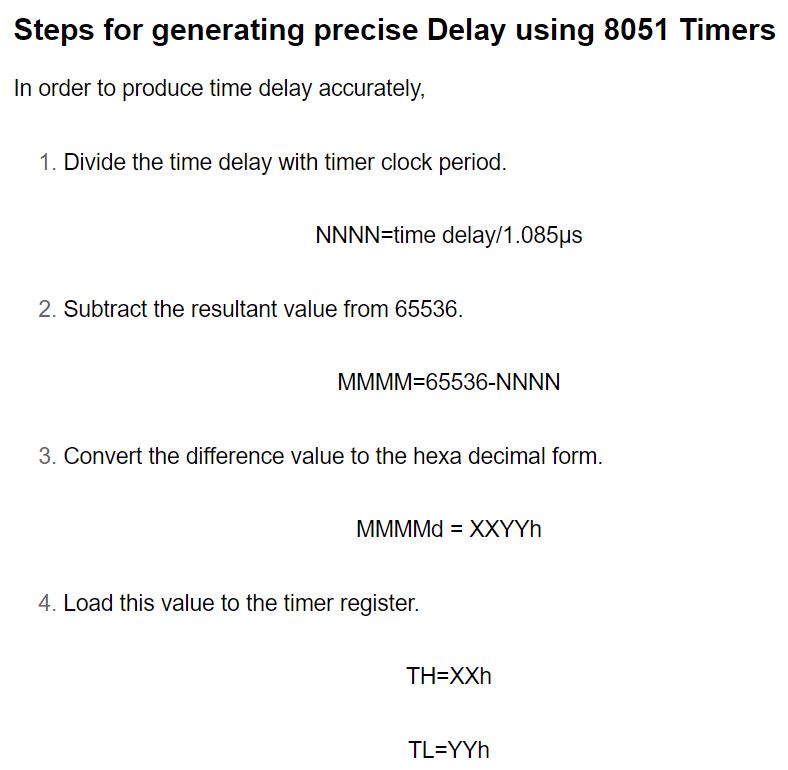
Designing a delay program using 8051 timers.
While designing delay programs in 8051, calculating the initial value that has to be loaded inot TH and TL registers forms a very important thing. Let us see how it is done.
Assume the processor is clocked by a 12MHz crystal.
That means, the timer clock input will be 12MHz/12 = 1MHz
That means, the time taken for the timer to make one increment = 1/1MHz = 1uS
For a time delay of “X” uS the timer has to make “X” increments.
2^16 = 65536 is the maximim number of counts possible for a 16 bit timer.
Let TH be the value value that has to be loaded to TH registed and TL be the value that has to be loaded to TL register.
Then, THTL = XXYY( Hexadecimal equivalent of (65536-X) where (65536-X) is considered in decimal.)
Load this value to the timer register.
TH=XXh TL=YYh